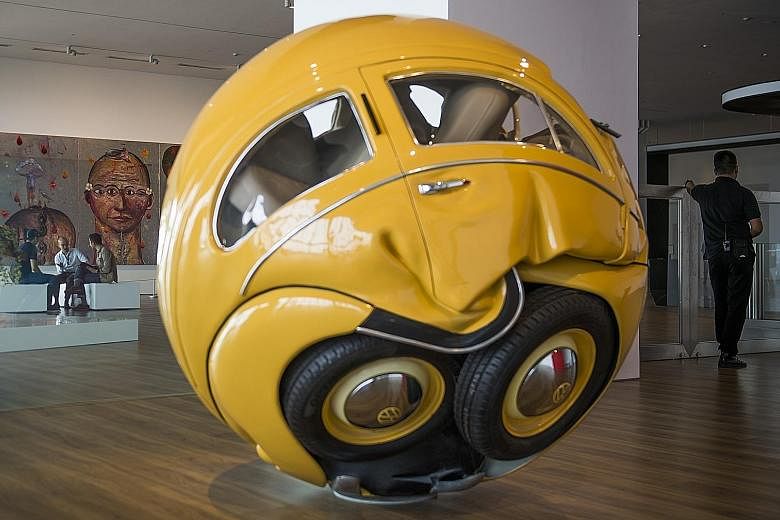JAKARTA • Art bailed him out during the Asian financial crisis. Now Indonesian tycoon Haryanto Adikoesoemo is bailing Jakarta out of the cultural desert with the opening last month of the Museum of Modern and Contemporary Art in Nusantara, also known as Museum Macan.
It boasts items from 800 contemporary and modern works owned by the property and chemicals businessman. Situated on a horseshoe-shaped floor of a tower, it, in its early days, has stunned crowds with phantasmagoric light installations such as Infinity Mirrored Room - Brilliance Of The Souls by Yayoi Kusama, alongside classic Indonesian modernist paintings by the likes of Raden Saleh.
Mr Adikoesoemo, 55, said he was determined to add a dose of culture to a city mainly known for its palatial shopping malls and awful traffic. "If I go to Europe, I go to museums for relaxation," he noted.
He has been collecting art for more than 20 years, amassing a mix of modernist Indonesian artists such as Affandi, contemporary Western artists such as Jean-Michel Basquiat and Jeff Koons, and contemporary artists from Japan and China, including Kusama and Ai Weiwei.
While the eclecticism could pose a challenge to curators trying to craft coherent exhibitions, Mr Aaron Seeto, the museum's director, said the diversity is a boon.
"One of the things we are really looking at in the programme is presenting Indonesia in the world, having conversations between Indonesia and elsewhere," he added.
"This is what museums all around the world would like to be able to do, but their collections don't allow them to do it."
Creating Museum Macan has been a decade-long dream for Mr Adikoesoemo whose early bid to collect art collapsed in the Asian financial crisis of 1997 and 1998. He had to sell all his most valuable pieces, including a Renoir and a Picasso.
He was born into a middle-class family in Java during the early 1960s, at the height of Indonesia's political and economic turmoil in the transition to the rule of strongman Suharto. By the time Mr Adikoesoemo reached high school, though, the political situation had stabilised and his father - who traded in chemicals, textiles and rubber - had established a thriving operation.
Mr Adikoesoemo studied at the University of Bradford in Britain, where he earned a degree in business management. There was little discussion of art in the household.
"I always wanted to be a businessman from when I was young," he said. He had an awakening of sorts in the early 1990s when he visited a friend's villa in Bali. It "had so many artworks on the wall", he said.
"His house becomes very colourful, vibrant and pleasant."
He began by buying Indonesian artworks. In 1996, he loaded up on modernist paintings, including a Picasso. But the Asian financial crisis in 1997 sent the Indonesian rupiah's value plummeting.
With Indonesian assets valued at next to nothing, the Picasso and Renoir were suddenly among the family's most valuable possessions. He sold the Western artworks as part of a debt-restructuring deal with 28 foreign banks.
By the early 2000s, with the economy recovering, he managed to retire the debts. But when he resumed buying art in the early 2000s, prices had skyrocketed so he bought mainly contemporary pieces.
He said opening up his personal collection to the world comes with far higher stakes than finding art that looks good in his house.
He even compared it to the stress of starting a business. "The same," he noted. "The anxiousness, this generates a lot of excitement and adrenaline."
NYTIMES

